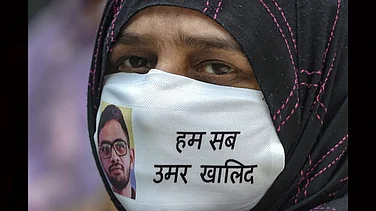Sri Sri Ravi Shankar was aiming for a Guinness record and is on record saying that, in any other country, his efforts at organising the “world’s largest cultural event” would have been recognised with an award. Instead, all he has got so far is an interim Rs 5 crore fine order, imposed by the National Green Tribunal. The NGT has turned down the plea of Vyakti Vikas Kendra (VVK), an NGO that represents Ravi Shankar’s Art of Living (AoL) Foundation in court, but the saga is far from over with AoL planning to appeal to the Supreme Court.
On March 9, two days before the World Culture Festival began in Delhi, the NGT had overruled objections and allowed the private event, but directed AoL to pay an interim fine for causing damage to the Yamuna’s floodplains by its preparations: the mega event finally attracted footfalls close to 37 lakh, according to AoL’s own claims. Ravi Shankar deposited Rs 25 lakh the next day, calling it a ‘cess’. In public, he waxed defiant, saying he would rather go to jail than pay the fine. He was, of course, more circumspect in court and committed to pay up by April 1—though his lawyer made the remarkable claim that, as a charitable organisation, AoL didn’t have funds.
The significance of April Fool’s Day had perhaps escaped the tribunal’s notice at the time. AoL didn’t pay the balance, but offered a bank guarantee instead, which is essentially a commitment by a bank to release funds subject to conditions. It is not clear, though, what exact conditions AoL wanted fulfilled before paying the interim fine. At the time, the complaint was still alive before the NGT, which has been told by an expert committee (see interview) that the cost of the damage and floodplain restoration would be around Rs 100 crore.
This week, the tribunal directed VVK to pay the remaining Rs 4.75 crore of the interim fine, in cash. “We are law-abiding citizens. We will pay the compensation as that is the NGT order, but we’ll do it under protest,” says AoL spokesperson Prasana Prabhu. “But we are exploring all options for justice within the legal framework, including going to the Supreme Court.”

Ravi Shankar had told the world he wouldn’t pay any fine
An investigation by Caravan magazine in May revealed the charity was actually flush with funds. Just seven of its affiliates abroad (in Switzerland, the US, Germany et al), the report claimed, had over Rs 200 crore in assets and around Rs 8 crore in cash this year, and had repatriated Rs 300 crore to India as foreign contribution since 2007.
Since the controversy broke, Ravi Shankar has regularly tweeted about completing 18 river rejuvenation projects AoL has undertaken. One such tweet claimed they had earmarked Rs 105 crore for rivers in drought-hit Maharashtra. This was while his lawyers continued to resist directions to pay the fine and it got former IFS officer Manoj Mishra to petition NGT against it.
According to expert estimates shared by a government source with Outlook, the cost of restoring biodiversity on a floodplain would come to Rs 50 lakh per hectare. Ravi Shankar claims to have used only 28 hectares (the stage took up a quarter of that). Even going by this, the total cost would be roughly Rs 14 crore. But at the same time, there are unverified claims that the World Culture Fest might have actually used and impacted around 400 hectares, which can be calculated using photographs of the event and GPS coordinates. Back-of-the-envelope calculations show this would raise the cost to around Rs 200 crore. Even half of this sounds like a staggering amount, but is close to the earlier estimation by the NGT’s expert committee.
The NGT has asked its expert committee to complete its assessment and submit its report, but allegations of bias have sought to put this under a cloud. One of the experts, Prof C.R. Babu, says he is not sure whether the committee would be allowed to do its job or get dismantled instead. AoL has petitioned the NGT to dismantle the expert committee chaired by a senior bureaucrat and comprising Prof A.K. Gossain of IIT Delhi and Prof Brij Gopal, formerly of JNU.
Ravi Shankar has said on record that he has committed no wrong and AoL is willing to volunteer for any restoration work. Experts scoff at such offers and say the work in this case is of a scientific nature and not like lifting garbage from a pond. “Did the NGT, which is supposed to do the scientific assessment, do it?” counters the AoL spokesperson. “We would like to know how they arrived at the Rs 5 crore figure. We have photographic evidence of the ground before we took it and also after we returned it. It clearly shows the floodplain is in better condition now than it was when we got it. Our experts have done a survey and confirmed that if there was any damage, the grass would not have grown so soon as it has now and in such abundance. In fact, we have requested the NGT to conduct a scientific assessment of the site. We are open to a thorough survey by any independent body.”
But the Yamuna floodplain is not a manicured cricket pitch, a lawn, town park or an urban beautification project, emphasise experts. Because of the ecological community the area naturally harbours, levelling it using construction debris was a bad idea.
AoL also claimed it had developed an enzyme that, when released in the water, would kill the stench that hangs around the riverbanks. Their volunteers even tried it on the river without permission from any government agency. The only scientific proof offered was Ravi Shankar’s tweet, “Villagers have said buffaloes who never ventured near the water are now entering the water. Even the buffaloes recognise!” The ‘buffalo testimony’ was not accepted and NGT prohibited AoL from using the enzyme in the river without certification. It could be a faeces-digesting microbe used in bio-toilets, possibly a close cousin of the bacteria found in cowdung. It may not be healthy for the soil and vegetation found in a floodplain. And the stench comes from the process of the canal discharge being cleaned by the floodplain vegetation.
At the site last week, the ramps, roads and parking spots built using construction debris were still there; the floodplain had been flattened with debris. The gullies running into the stream had been obstructed by debris-filled ramps. The roads should have been taken down except one that had been built during a 2006 event by the Times Group, called the Times Global Village. Mishra had also approached the courts then. By the time the Delhi High Court heard the issue, the month-long shopping extravaganza was over. But it did raze the ‘village’ and thwart the organiser’s plans to make it into an annual event for a decade.
***
Riparian Zone
During monsoon, all major rivers bring sediments from their catchments areas in the mountains every year. The channel cannot carry the entire flow. Some of it spills over the banks and is deposited along the river, creating floodplains. Depressions in these floodplains become floodplain wetlands, a crucial part of the river’s ecological continuum.
Properties Of Riparian Zone
- Prevents downstream floods
- Special vegetation that traps silt on the floodplains
- Groundwater recharging, used by people located along rivers
- During dry season, water table replenishes river with fresh water
- Planktons (zoo and phyto) grow in the wetlands vegetation


























